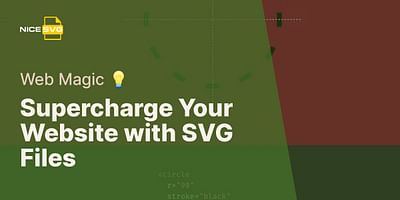Samantha Clarke is a seasoned graphic designer with over 15 years of experience in the industry. She has a deep understanding of SVG files and their applications in various design projects. Samantha is passionate about sharing her knowledge and helping others master the use of SVG files.
Absolutely! SVG files can be used in WooCommerce product pages to enhance the visual appeal and interactivity of your online store. SVG, which stands for Scalable Vector Graphics, is a popular file format for creating high-quality, resolution-independent graphics. Unlike raster images, SVG files can be scaled up or down without losing any quality, making them perfect for displaying product images, icons, logos, and more.
To use SVG files in WooCommerce product pages, follow these simple steps:
1. Prepare your SVG files: Make sure you have the SVG files you want to use ready. You can create your own SVG files using graphic design software like Adobe Illustrator or Inkscape, or you can find free SVG files online from various sources, including our own website, NiceSVG.
2. Upload SVG files to your WordPress media library: Log in to your WordPress dashboard and navigate to the Media Library. Click on "Add New" to upload your SVG files. WordPress supports SVG files by default, so you can easily upload and manage them just like any other media file.
3. Insert SVG files into your WooCommerce product pages: Now that your SVG files are in the media library, you can insert them into your WooCommerce product pages. Edit the product you want to add the SVG file to, and locate the "Product Image" section. Click on "Add Media" to open the media library, and select the SVG file you want to use. Once inserted, you can adjust the size and alignment of the SVG file within the product image section.
4. Customize SVG appearance and behavior: SVG files offer a wide range of customization options. You can change the color, stroke, and fill properties of SVG elements using CSS. Additionally, you can add interactivity to your SVG files by using JavaScript. For example, you can create hover effects, animations, or even interactive product configurators using SVG and JavaScript.
5. Test and optimize: After adding SVG files to your WooCommerce product pages, it's important to test them across different devices and browsers to ensure they display correctly. SVG files are generally well-supported, but it's always a good idea to check for any compatibility issues. You can also optimize your SVG files for web use by removing unnecessary code or compressing them using online tools or plugins.
By using SVG files in your WooCommerce product pages, you can create visually stunning and engaging product displays that will captivate your customers and enhance their shopping experience. So go ahead and unleash your creativity with SVG in WooCommerce!
If you're looking for free SVG files or converters, be sure to check out our website, NiceSVG. We have a vast library of SVG files and helpful resources to assist you in making the most of SVG in your WooCommerce store. Happy designing!















